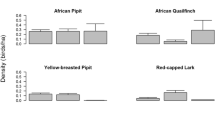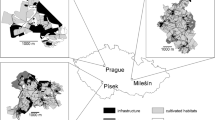Abstract
Power line rights-of-way provide a major portion of the shrub habitat in New York. Since this habitat type is on the decline, many of the birds dependent on shrub habitat are also declining. The methods used to control right-of-way vegetation could therefore have serious impacts on several birds of conservation concern. Since New York is increasingly using selective herbicide treatments in vegetation management, we sought to investigate the potential impacts of these treatments on nesting birds. The study looked at plots in two adjacent rights-of-way before and after a selective herbicide treatment in one of the rights-of-way. We investigated three bird species: alder flycatcher (Empidonax alnorum), chestnut-sided warbler (Dendroica pensylvanica), and gray catbird (Dumetella carolinensis). All three species exhibited a preference for shrub vegetation around nest sites. The selective herbicide treatment did not significantly decrease that shrub vegetation, and neither the density nor the nesting success of the three species declined following the treatment. We conclude that selective herbicide vegetation management encourages the development of shrub habitat without negatively impacting the birds nesting in the habitat.
Similar content being viewed by others
Author information
Authors and Affiliations
Rights and permissions
About this article
Cite this article
MARSHALL, J., VANDRUFF, L. Impact of Selective Herbicide Right-of-Way Vegetation Treatment on Birds. Environmental Management 30, 0801–0806 (2002). https://doi.org/10.1007/s00267-002-2641-7
Issue Date:
DOI: https://doi.org/10.1007/s00267-002-2641-7




